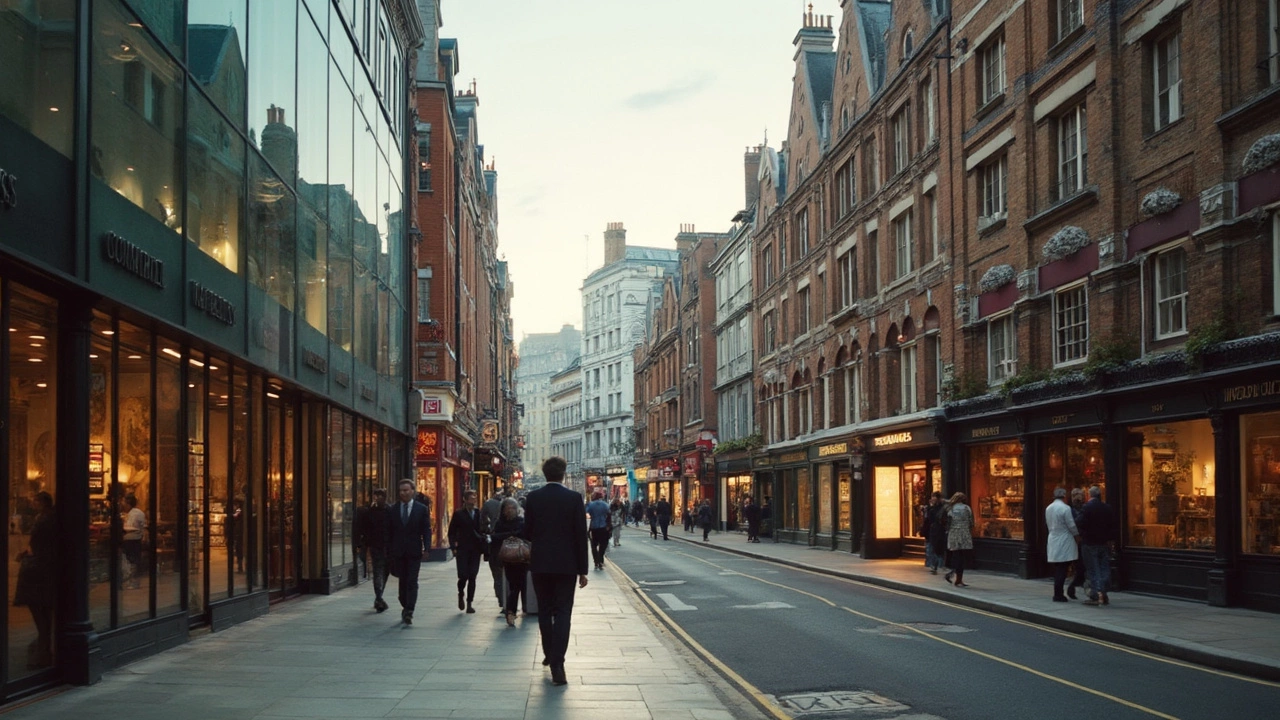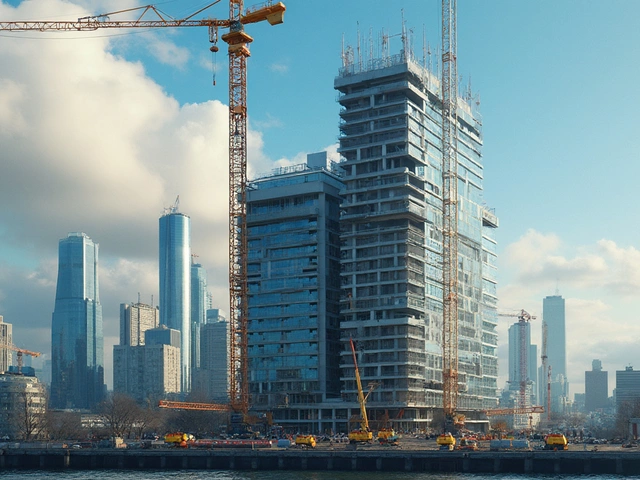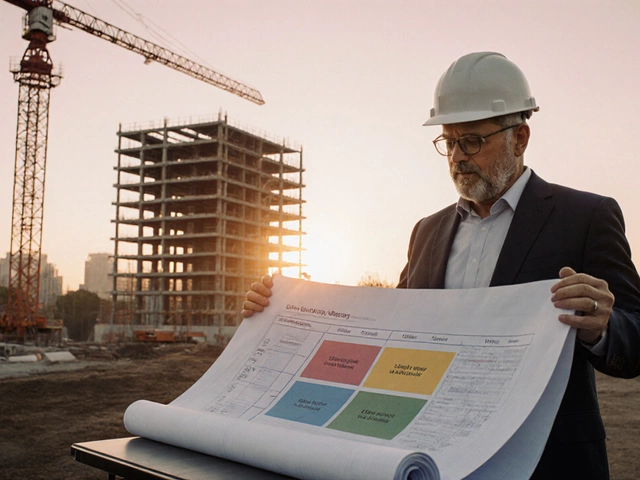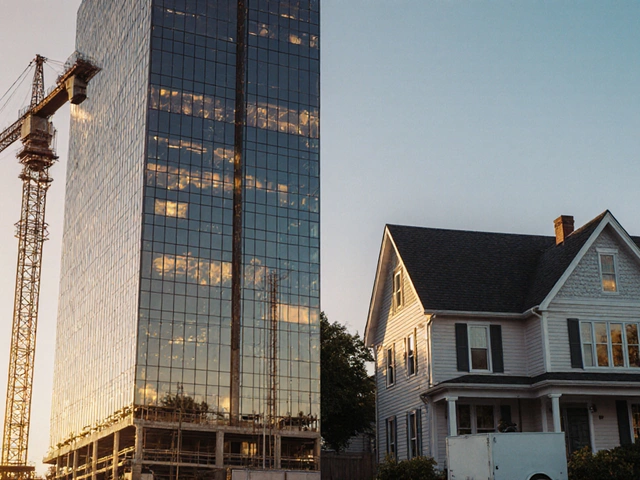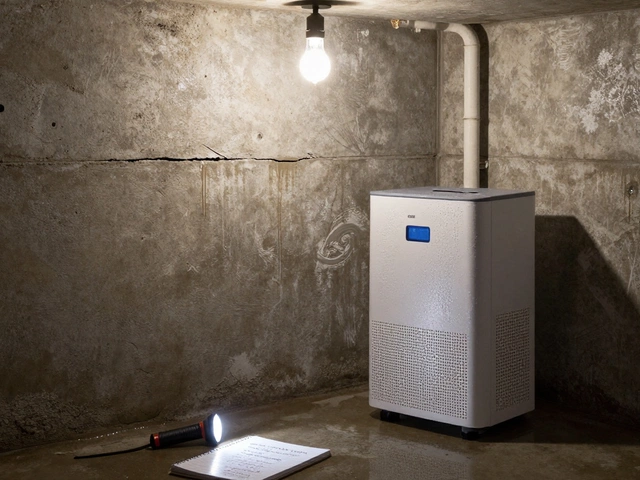You can spot a commercial building from a mile away—think skyscrapers downtown, new strip malls, or even that warehouse by the highway. But what actually makes a building count as 'commercial'? It isn’t just about having a business sign out front. The definition goes way deeper, and if you get it wrong, you could end up on the wrong side of city inspectors or your bank’s lending rules.
Here's the real deal: commercial buildings are properties used mostly for business purposes. They’re offices, shops, restaurants, medical clinics, and more—basically, any spot where people work, shop, or get services instead of live. The line between commercial, residential, and industrial spaces seems fuzzy at first, but once you know what to look for, it all clicks. Understanding these differences can save you a ton of headaches, especially if you're planning to lease, buy, or build something new.
- Defining a Commercial Building
- Major Types of Commercial Properties
- How Zoning and Regulations Shape Buildings
- Design Features You’ll Notice
- Why This Stuff Matters for Your Business
- Tips Before Leasing or Buying Commercial Space
Defining a Commercial Building
It's easy to think any building with a business inside is a commercial building, but there's more to it. Officially, a commercial building is any property designed or used mainly for activities like selling products, providing services, or running an office. Residential buildings focus on living spaces—think apartments or houses—while commercial ones are for work, retail, or professional services. Warehouses, hotels, grocery stores, and clinics all fit under the commercial umbrella.
The differences aren't just about who spends time there. There are clear rules from places like the International Code Council, which says,
"Commercial occupancy refers to the part of a building used for the transaction of business, such as offices, retail shops, or service outlets."
Besides business use, several things help set commercial buildings apart:
- Zoning laws: Cities split areas into zones for housing, business, or factories. Only certain zones allow for commercial buildings. You can't open a car dealership in the middle of a quiet neighborhood—at least, not legally.
- Building codes: Rules for fire safety, accessibility, restrooms, and parking are stricter for commercial than residential buildings. These codes aim to keep workers and customers safer.
- Design elements: Commercial properties often have features like loading docks, big parking lots, shared lobbies, elevators, and multiple entry points. They handle more foot traffic than homes do, so they need things like wider hallways, bright lighting, and strong HVAC systems.
Bottom line: The intention behind the building, how it’s built, and where it’s located decide whether it’s commercial or not. Get these basics right, and you’re less likely to run into costly surprises with your next property move.
Major Types of Commercial Properties
Walk down any main street or drive through the business section of your city, and you’ll spot dozens of different commercial buildings. But not all of them serve the same purpose. Commercial building isn’t a one-size-fits-all term—these properties are divided into some pretty clear categories, each with their own rules, uses, and even quirks in the way they’re constructed and managed.
- Office Buildings: These range from downtown skyscrapers to suburban business parks. There’s even a grading system for office spaces—Class A (high-end, modern, prime location), Class B (decent quality in good areas), and Class C (older or less desirable neighborhoods). In 2024, about 57% of U.S. office buildings are classified as Class B.
- Retail Properties: Think local strip centers, big-box stores, malls, and even standalone fast-food places. Some people are surprised that restaurants and car dealerships fall into this group, but they do—it’s all about where business meets customer.
- Industrial Spaces: Warehouses, manufacturing plants, and distribution hubs all fit here. They usually sit in specific industrial zones and often have special needs, like access for big trucks or heavy equipment. Industrial space leasing hit a record high in the U.S. in 2023, with more than 725 million square feet leased—a sign of all our online shopping.
- Multi-Family Buildings: This one throws people off. If an apartment building has more than four units, it counts as a commercial property for financing and regulation purposes. Smaller apartment buildings are usually considered residential.
- Special-Purpose Properties: Hotels, hospitals, self-storage, movie theaters, and even bowling alleys. These don’t fit neatly into the other categories but still play a big role in many neighborhoods.
Here’s a handy breakdown showing about how much each type makes up of total U.S. commercial real estate:
| Type | Approx. Share (%) |
|---|---|
| Office | 16% |
| Retail | 18% |
| Industrial | 23% |
| Multi-Family | 41% |
| Special-Purpose | 2% |
These categories aren’t just for show. Banks, insurance companies, and city inspectors all care about what type of building you’re dealing with, since the rules (and risks) change with each one. Knowing which bucket your building falls into can make financing smoother, make it easier to find the right tenant, and keep you out of legal trouble.
How Zoning and Regulations Shape Buildings
Zoning laws are like the rulebook for what you can and can’t do with a piece of land. Cities break up land into different zones—commercial, residential, industrial, and mixed-use—to keep neighborhoods organized and safe. If a building’s in a commercial zone, it’s usually meant for businesses, not families looking for a quiet home or factories making heavy stuff. Try running a warehouse in a zone meant for coffee shops, and you’ll have city officials knocking at your door fast.
Zoning isn’t just about what goes where. It sets limits on building height, how close you can build to the street, parking requirements, and sometimes even the look of the building. Every city or town has its own playbook, so what flies in one area might get shut down in another. Here’s a quick peek at typical commercial zoning rules:
- Height restrictions (example: max 5 stories on Main Street)
- Required setbacks—how far buildings must be from sidewalks or property lines
- Minimum parking spaces based on square footage
- Signage limits—how big and bright your signs can be
- Specific types of businesses allowed (some zones let in restaurants, others only offices or retail)
Building codes layer on even more rules. They lay out safety stuff: things like fire exits, sprinkler systems, what materials you can use, and how accessible the building is for people with disabilities. On top of that, you may need permits for anything from new construction to putting up a fence. Skip the permits, and you risk fines or even a stop-work order. Ever wonder why remodeling an old pizza shop into a medical clinic can be such a pain? Building codes for a healthcare spot are way stricter than for a restaurant.
Check out this table for a simple look at how zoning and codes differ between commercial and residential buildings:
| Feature | Commercial Buildings | Residential Buildings |
|---|---|---|
| Allowed Uses | Offices, stores, clinics, restaurants | Homes, apartments |
| Parking Requirements | Often higher (example: 1 spot per 250 sqft office) | Usually lower (1-2 per unit) |
| Signage Rules | Regulated by size, lighting, placement | Much stricter or banned |
| Building Codes | Emphasize safety and public access | Focus on comfort, fire safety |
The takeaway? Local zoning and regulations shape exactly what you can build, where you can build it, and what kind of business you can run. Always check your city’s zoning maps and talk to the building department before you sign anything. The rules are there to keep business properties working smoothly for everyone—but they’re not always simple or the same from town to town. Staying in the good graces of zoning and building officials can save you huge headaches and a lot of money.
If you’re shopping for a commercial building, digging into the local code is a must. Some places are strict, others more relaxed, and sometimes a single street can mean a whole new set of rules.
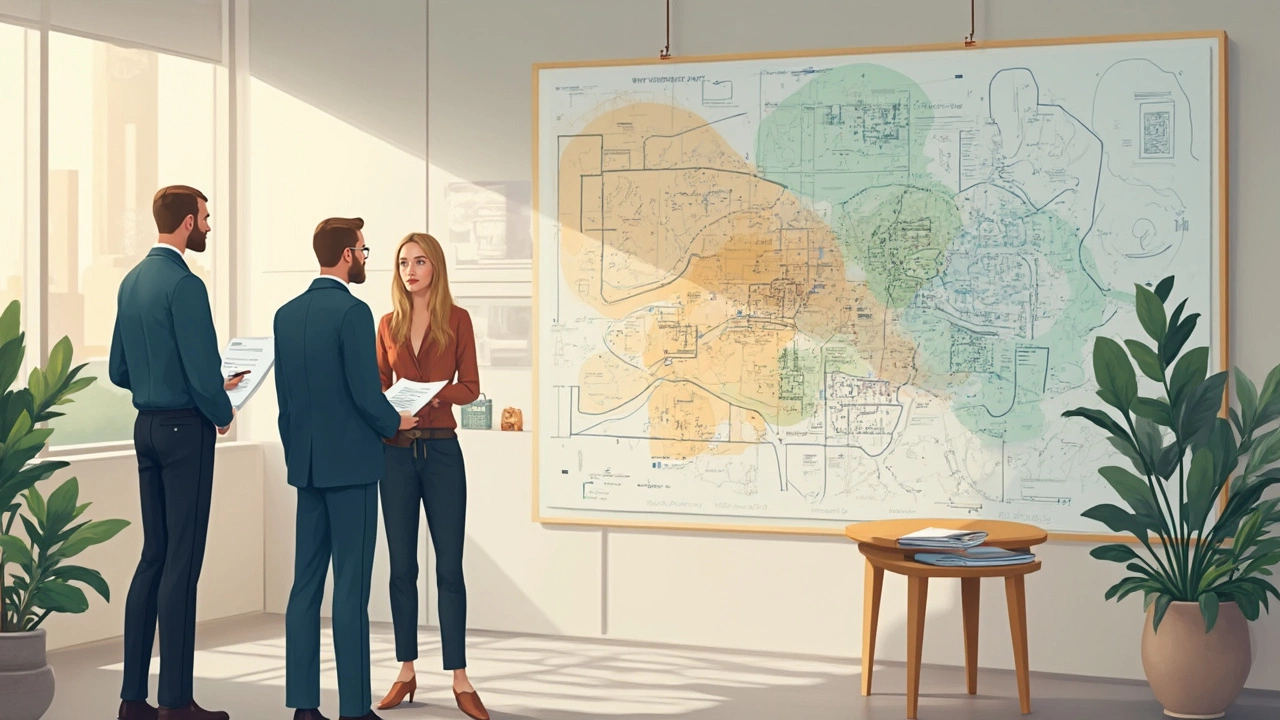
Design Features You’ll Notice
Let’s get right to it—design is a dead giveaway when figuring out if a spot is a commercial building. When you walk into a commercial space, you’ll notice the layout is made for businesses, not families. You’ll see things like big open floor plans, higher ceilings, and way more parking than a townhouse or apartment building. No private backyards or cozy porches here.
Accessibility is also a big priority. Most commercial buildings have ramps, wide doorways, and elevators because of ADA requirements. If the building is new, chances are the restrooms are fully wheelchair-friendly and there are signs with braille. You won’t find this level of public-access planning in most homes.
Other must-haves include built-in fire safety stuff—like sprinklers, alarms, and clear exit signs. Walk through a big chain store or office lobby, and you’ll notice the tech supporting dozens or even hundreds of people at once. The electric panels are beefier, the HVAC systems are huge, and there are sometimes backup generators as part of the deal.
Materials stand out, too. You’ll see more glass, steel, and reinforced concrete. Surfaces are durable, easy to clean, and made to handle lots of foot traffic. A restaurant’s kitchen, for example, is loaded with stainless steel and tile that can survive daily spills and rough use without a hitch.
- Wide entrances and lobbies for heavy foot traffic
- Commercial-grade elevators and escalators
- ADA-compliant restrooms and hallways
- Emergency exits close to every public area
- High-wattage lighting—inside and outside
For some stats, check out this quick table showing the differences between common commercial and residential features:
| Feature | Commercial Building | Residential Building |
|---|---|---|
| Ceiling Height | Typically 10-14 ft | Usually 8-9 ft |
| Parking | 1 spot per 200-500 sq ft | 1-2 spots per unit |
| Electric Load | 50-200+ amps | 100-200 amps |
| Fire Safety | Sprinklers, alarms mandatory | Not always required |
| Accessibility | ADA compliance needed | Rarely required |
It’s the little things—plus a few big rules—that make commercial buildings function for business and public use. Next time you’re out, you’ll probably start spotting these clues instantly.
Why This Stuff Matters for Your Business
If you’re running or thinking about starting a business, the type of building you choose is a game-changer. Having your shop, office, or warehouse in a commercial building isn't just about looks or location—there are real, bottom-line reasons this stuff matters.
First off, zoning laws are strict about what you can do where. If you try running a business in a spot zoned for homes, you’ll eventually get shut down or fined by the city. Commercial properties are set up to handle all the rules businesses need to follow: things like fire codes, accessibility for people with disabilities, parking, and more. For example, the Americans with Disabilities Act (ADA) lays out specific requirements for ramps, entrances, and bathrooms in commercial buildings. If your space doesn’t measure up, you can face lawsuits—nobody wants that headache.
Insurance costs are also different. Insuring a business in a non-commercial property will usually be pricier, riskier, and might not even be allowed by most companies. Plus, commercial buildings are built to handle things like higher foot traffic, big equipment, and the occasional accident. They come with stronger plumbing, extra wiring, and sometimes bigger water and electrical hookups.
Thinking of selling or leasing your building someday? Commercial properties follow their own price rules. Their value is usually set by how much income the property generates, not just what the neighbors sold for. That can work out great for you if your spot is in a busy or fast-growing area.
Here’s a quick snapshot to show how commercial and residential properties differ in facts that matter to your wallet and business plans:
| Factor | Commercial Property | Residential Property |
|---|---|---|
| Average Lease Length | 3-10 years | 1 year or less |
| Building Codes | Strict; business-focused | Less strict; for living |
| Insurance Costs | Higher but tailored to business | Lower for personal living |
| Financing Options | Business loans, often larger down payment | Home mortgages |
| Resale Value Based On | Income potential, location | Comparable sales |
Getting these details right can save your business from future surprises. Whether you’re after steady customers, easier expansion, or stronger resale value, picking the right property type is a huge step toward your goals. Don’t just look at the outside—everything about a property’s use affects your risk, flexibility, and return on investment.
Tips Before Leasing or Buying Commercial Space
Ready to jump into the world of commercial building spaces? Before you sign anything, there’s some real homework to do. Getting the details right can save you piles of cash and major stress.
First, figure out what zoning rules apply to your target spot. Cities have tons of restrictions about what kind of business can go where—offices, restaurants, or warehouses have different requirements. If you want to open a coffee shop but buy a space zoned only for offices, you’re out of luck. Always check with the local zoning office before getting attached to a place.
Second, ask about the building’s condition and age. Older buildings may have charm, but things like asbestos, out-of-date wiring, or poor energy efficiency can sneak up on you. According to a survey by the National Association of Realtors, buildings over 30 years old are three times more likely to have HVAC problems than newer ones—repairs mean extra costs.
| Building Age | Average Repair Cost (Per Year) |
|---|---|
| 0-15 years | $2,800 |
| 16-30 years | $5,200 |
| 31+ years | $8,900 |
Now, don’t just skim the lease or sale agreement. Know what maintenance you’re responsible for. Some landlords take care of everything but others throw in surprise expenses. Common leases (called "triple net") often make tenants cover property taxes, insurance, and repairs, not the owner.
Before you commit, walk through the building in person—don’t just rely on photos. Check things like ceiling heights, floor loads, parking access, and ADA compliance. It’s common for older spaces to need upgrades before opening the doors. Don’t be shy about bringing a building inspector or even a friend who knows what to look for.
- Check the location’s foot traffic (for retail) or vehicle access (for industrial)
- Confirm utility capacities like internet speed, electric supply, and water lines
- Ask the city about future developments in the area that could help—or hurt—your business
- Always get a rough estimate of monthly costs beyond rent or mortgage: insurance, security, maintenance, and utilities add up fast
Lastly, think about your exit plan. Sometimes, your business outgrows the space or the area changes. Can you sublet or sell quickly? What fees apply if you break your lease? Make sure you aren’t cornered into an expensive long-term deal that doesn’t fit your future.
